-
-
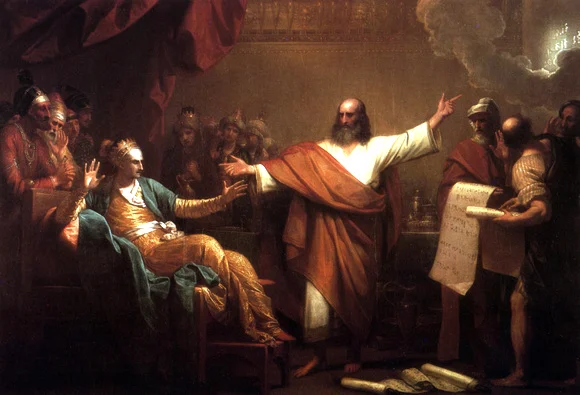 Liturgical drama started in church services, where priests and monks performed short scenes to share Bible stories with people who couldn’t read or understand Latin. These performances were simple at first but then added more characters and props while remaining within the church (Brockett and Hildy). The main goal was to teach important moral lessons and make biblical events easier for the audience to understand.
Liturgical drama started in church services, where priests and monks performed short scenes to share Bible stories with people who couldn’t read or understand Latin. These performances were simple at first but then added more characters and props while remaining within the church (Brockett and Hildy). The main goal was to teach important moral lessons and make biblical events easier for the audience to understand. -
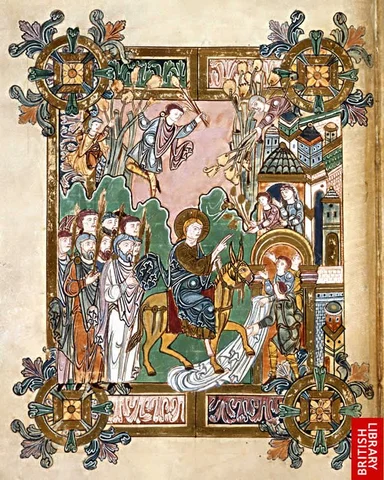 The Regularis Concordia, created by Bishop Æthelwold, is an important medieval theatre document. It provided instructions for the Easter Quem Quaeritis trope, setting guidelines for churches to perform religious plays. Considered one of the first formal scripts, it helped shape how religious stories were told and influenced future theatre (Murray).
The Regularis Concordia, created by Bishop Æthelwold, is an important medieval theatre document. It provided instructions for the Easter Quem Quaeritis trope, setting guidelines for churches to perform religious plays. Considered one of the first formal scripts, it helped shape how religious stories were told and influenced future theatre (Murray). -
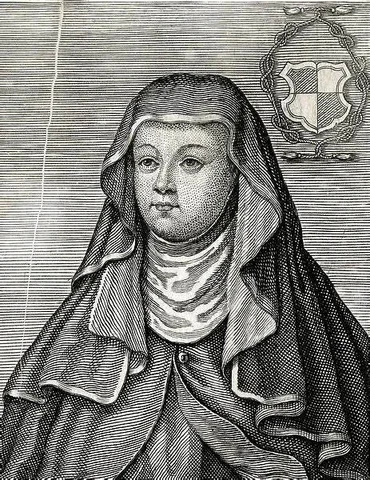 Hrosvitha was a German canoness who wrote six Latin plays with Christian themes, inspired by the Roman playwright Terence. Her plays focused on female virtue and moral lessons (Murray). As the first known female playwright in Europe, Hrosvitha challenged the norms of her time by combining classical influences with Christian values.
Hrosvitha was a German canoness who wrote six Latin plays with Christian themes, inspired by the Roman playwright Terence. Her plays focused on female virtue and moral lessons (Murray). As the first known female playwright in Europe, Hrosvitha challenged the norms of her time by combining classical influences with Christian values. -
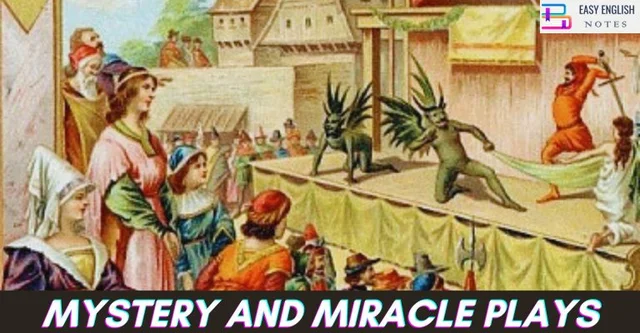 Mystery plays, also known as cycle plays, presented stories from the Bible, covering events from Creation to the Last Judgment. They were performed in towns throughout Europe, especially during religious festivals (Brockett and Hildy). These plays expanded theatre beyond the church, involving guilds and local communities, and were crucial in developing community-based theatre.
Mystery plays, also known as cycle plays, presented stories from the Bible, covering events from Creation to the Last Judgment. They were performed in towns throughout Europe, especially during religious festivals (Brockett and Hildy). These plays expanded theatre beyond the church, involving guilds and local communities, and were crucial in developing community-based theatre. -
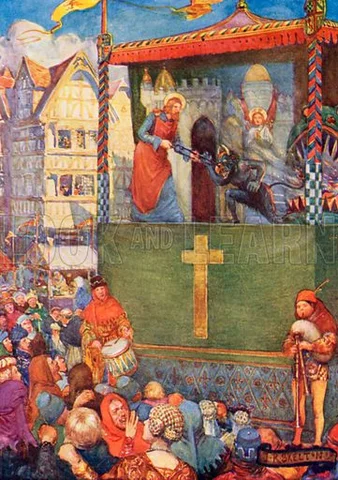 Miracle plays told stories about the lives and miracles of saints like Saint Mary and Saint Nicholas. These plays were performed outside the church (Murray). Their significance lies in the fact that they marked a change in religious drama, moving away from only strict biblical stories to include legendary tales about saints. This expanded the range of themes in medieval theatre.
Miracle plays told stories about the lives and miracles of saints like Saint Mary and Saint Nicholas. These plays were performed outside the church (Murray). Their significance lies in the fact that they marked a change in religious drama, moving away from only strict biblical stories to include legendary tales about saints. This expanded the range of themes in medieval theatre. -
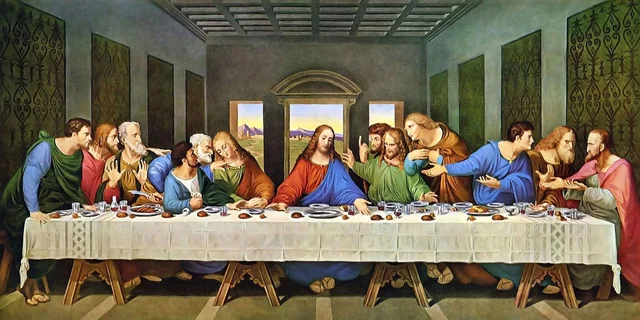 Established by Pope Urban IV, this feast day became a popular time for performing mystery plays, especially in England and France. The entire cycles of these plays were staged over several days (Parker). The significance of this feast is that it helped create a tradition of large outdoor performances, making theatre an important part of public life in Europe.
Established by Pope Urban IV, this feast day became a popular time for performing mystery plays, especially in England and France. The entire cycles of these plays were staged over several days (Parker). The significance of this feast is that it helped create a tradition of large outdoor performances, making theatre an important part of public life in Europe. -
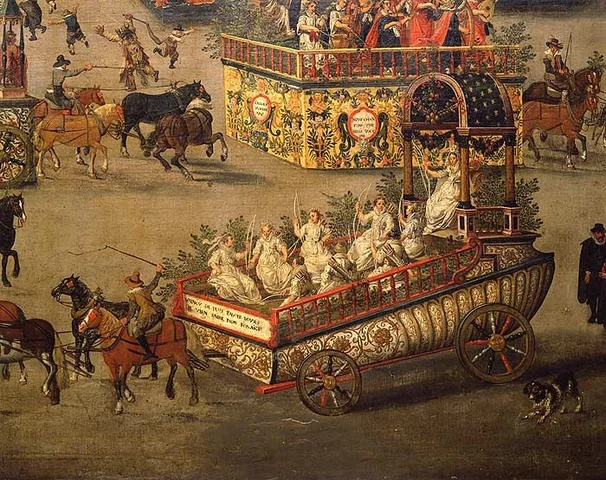 Mumming plays, a kind of folk theatre with masked performers, became popular. Pageant wagons, which served as moving stages, were also introduced, allowing performances to travel around towns (Mack). The significance of mumming is that it made theatre more accessible to the public. Pageant wagons allowed for more elaborate mystery plays, making the performances even more exciting and engaging.
Mumming plays, a kind of folk theatre with masked performers, became popular. Pageant wagons, which served as moving stages, were also introduced, allowing performances to travel around towns (Mack). The significance of mumming is that it made theatre more accessible to the public. Pageant wagons allowed for more elaborate mystery plays, making the performances even more exciting and engaging. -
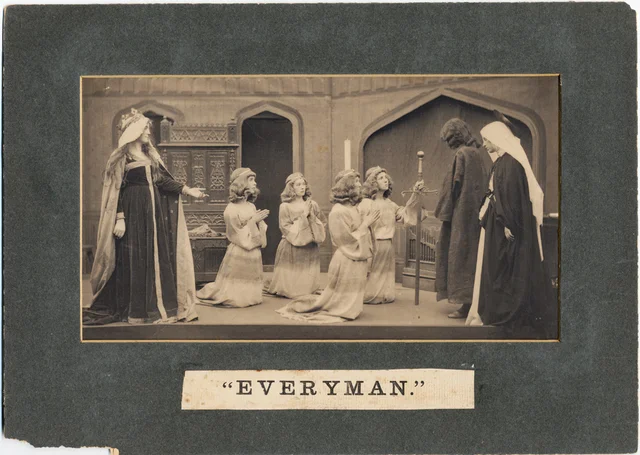 Morality plays, like Everyman, were stories where characters represented different moral qualities, such as Good Deeds and Knowledge. These plays aimed to teach Christian values (Murray). The significance of these plays is that they emphasized personal morality and salvation, providing lessons on how to behave ethically. They also introduced complex symbols that later influenced Renaissance theatre.
Morality plays, like Everyman, were stories where characters represented different moral qualities, such as Good Deeds and Knowledge. These plays aimed to teach Christian values (Murray). The significance of these plays is that they emphasized personal morality and salvation, providing lessons on how to behave ethically. They also introduced complex symbols that later influenced Renaissance theatre. -
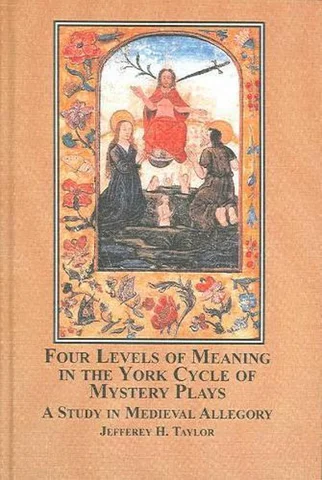 In York, England, a cycle of 48 mystery plays was created that told biblical stories from Creation to the Last Judgment. These plays were performed every year in Corpus Christi (Parker). The significance of the York cycle is that it is one of the most well-known and complete sets of medieval mystery plays. It highlights the teamwork and community spirit involved in putting on these performances during medieval times.
In York, England, a cycle of 48 mystery plays was created that told biblical stories from Creation to the Last Judgment. These plays were performed every year in Corpus Christi (Parker). The significance of the York cycle is that it is one of the most well-known and complete sets of medieval mystery plays. It highlights the teamwork and community spirit involved in putting on these performances during medieval times. -
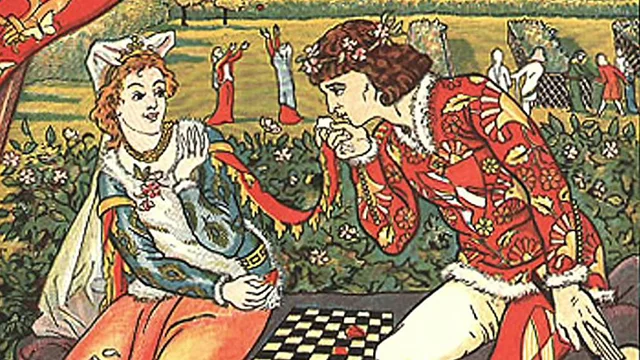 Secular interludes were short, often funny plays performed between courses at banquets or during celebrations. They introduced everyday themes and focused on characters (Parker). The significance of these interludes is that they marked a change from only religious content to more secular topics. They combined comedy and social commentary, helping to pave the way for the variety of dramatic styles seen during the Renaissance.
Secular interludes were short, often funny plays performed between courses at banquets or during celebrations. They introduced everyday themes and focused on characters (Parker). The significance of these interludes is that they marked a change from only religious content to more secular topics. They combined comedy and social commentary, helping to pave the way for the variety of dramatic styles seen during the Renaissance.